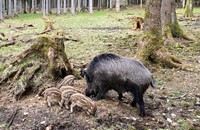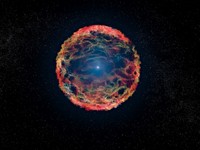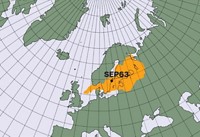Advertisement
Grab your lab coat. Let's get started
Welcome!
Welcome!
Create an account below to get 6 C&EN articles per month, receive newsletters and more - all free.
It seems this is your first time logging in online. Please enter the following information to continue.
As an ACS member you automatically get access to this site. All we need is few more details to create your reading experience.
Not you? Sign in with a different account.
Not you? Sign in with a different account.
ERROR 1
ERROR 1
ERROR 2
ERROR 2
ERROR 2
ERROR 2
ERROR 2
Password and Confirm password must match.
If you have an ACS member number, please enter it here so we can link this account to your membership. (optional)
ERROR 2
ACS values your privacy. By submitting your information, you are gaining access to C&EN and subscribing to our weekly newsletter. We use the information you provide to make your reading experience better, and we will never sell your data to third party members.
Mass Spectrometry
Chemistry helps reconstruct the origin of 2017 ruthenium plume
Samples from Viennese air filters help piece together the details of a controversial nuclear accident
by Laura Howes
June 17, 2020
| A version of this story appeared in
Volume 98, Issue 24
In the fall of 2017, a cloud of radioactive ruthenium slowly spread across Europe, moving from east to west. Levels of the radioactive element weren’t high enough to pose a health hazard, but officials were still alarmed. It’s taken a long time to piece together what happened, but new evidence published this month suggests the Ru was released after a fire or explosion during processing of spent fuel from a Russian plant.
Reconstructing the path of the radioisotope cloud led French and German radiation protection agencies back to the Mayak reprocessing facility in the Southern Urals in Russia. But Rosatom, Russia’s nuclear energy corporation, denied these findings. So a group of scientific detectives started trying to crack the case.
In 2019, Leibniz University Hannover chemist Georg Steinhauser and colleagues examined radioactive isotopes captured in different countries during the 2017 incident. They showed that the plume probably came from spent nuclear fuel that was processed when much younger than normal. This suggested to Steinhauser that the fuel might be related to efforts at Mayak to create cerium-144: Mayak had taken and then canceled such an order.
But there could have been other explanations for the isotopic ratio. So Steinhauser and PhD student Dorian Zok worked with Thorsten Kleine’s group at the University of Münster to supplement their work by looking at the stable isotopes of Ru that were released. They used mass spectrometry to examine Ru caught by Viennese air filters and the fuller isotopic fingerprint confirms that the Ru wasn’t from nuclear weapons activity. Comparing the profiles to those of nuclear waste from common reactor types suggests to Steinhauser that the Ru came from spent fuel from a water-water energetic reactor, a type used only in Russia (Nat. Commun. 2020, DOI: 10.1038/s41467-020-16316-3)
Camille Palmer at Oregon State University cautions that using Ru isotopes as a single indicator of reactor type is challenging, but she says the linkage is plausible and the team “did an outstanding job of isolating the Ru and measuring the stable isotopes.”
Other work published this week fills in the picture with even more details. Michael Cooke, at Health Canada’s Radiation Protection Bureau, offered to help Steinhauser identify the Ru compounds in the filters collected from sites around Europe. About 7% of the sample partitioned into dative solvents like ethanol, so it was clear to Cooke that the filters contained more electron-rich forms of ruthenium. Cooke found a small amount of a 106Ru(III) polychlorinated component and something he thinks is 106RuO2 (Proc. Natl. Acad. Sci. U.S.A. 2020, DOI: 10.1073/pnas.2001914117). These are fingerprints of part of the PUREX processing of nuclear fuel. Processing hot, young fuel probably exacerbated an already exothermic process, causing a fire or explosion and releasing the rogue Ru.
Steinhauser says the detective story has now come to its end. The International Atomic Energy Agency does not have a mandate to conduct an investigation on its own, and no government has assumed responsibility. But even if someone had reported the incident, Cooke says the research demonstrates what nuclear forensics can do with even very small samples.





Join the conversation
Contact the reporter
Submit a Letter to the Editor for publication
Engage with us on Twitter